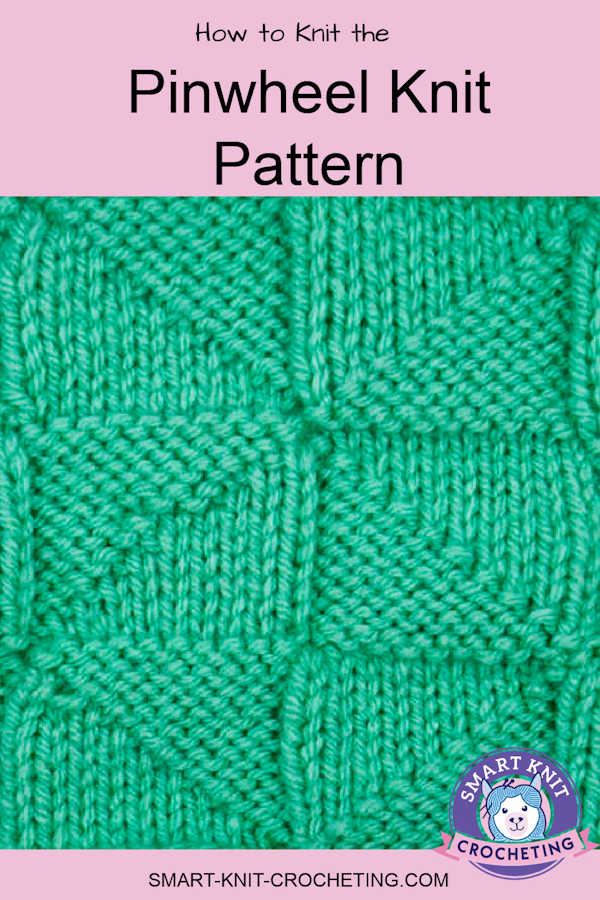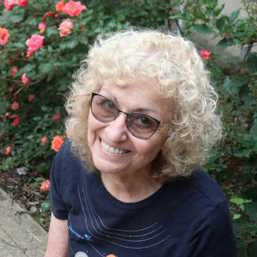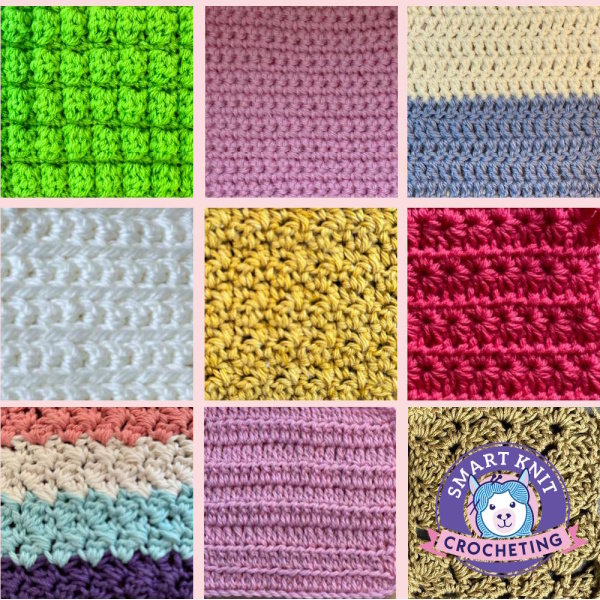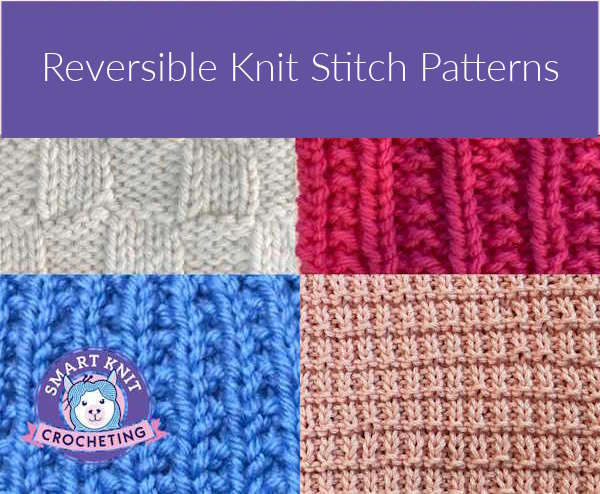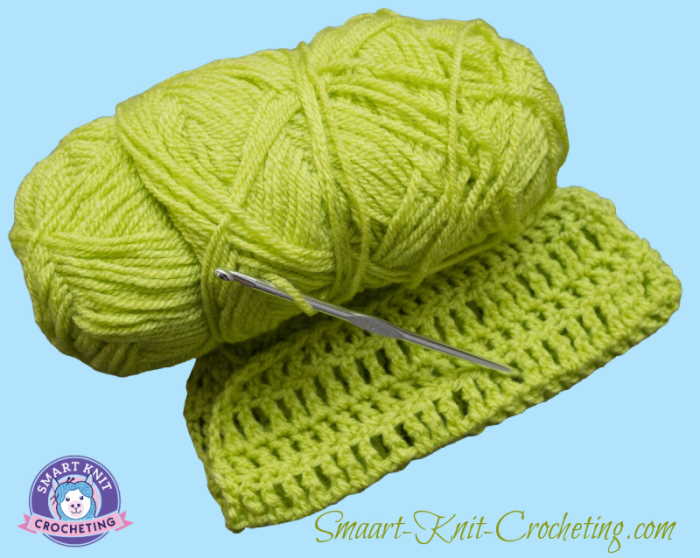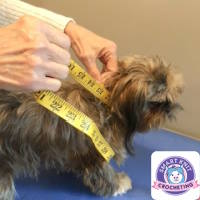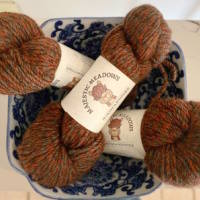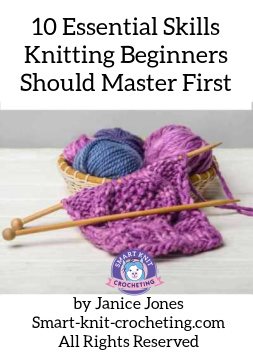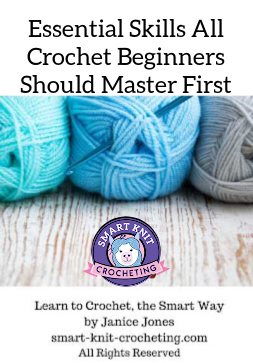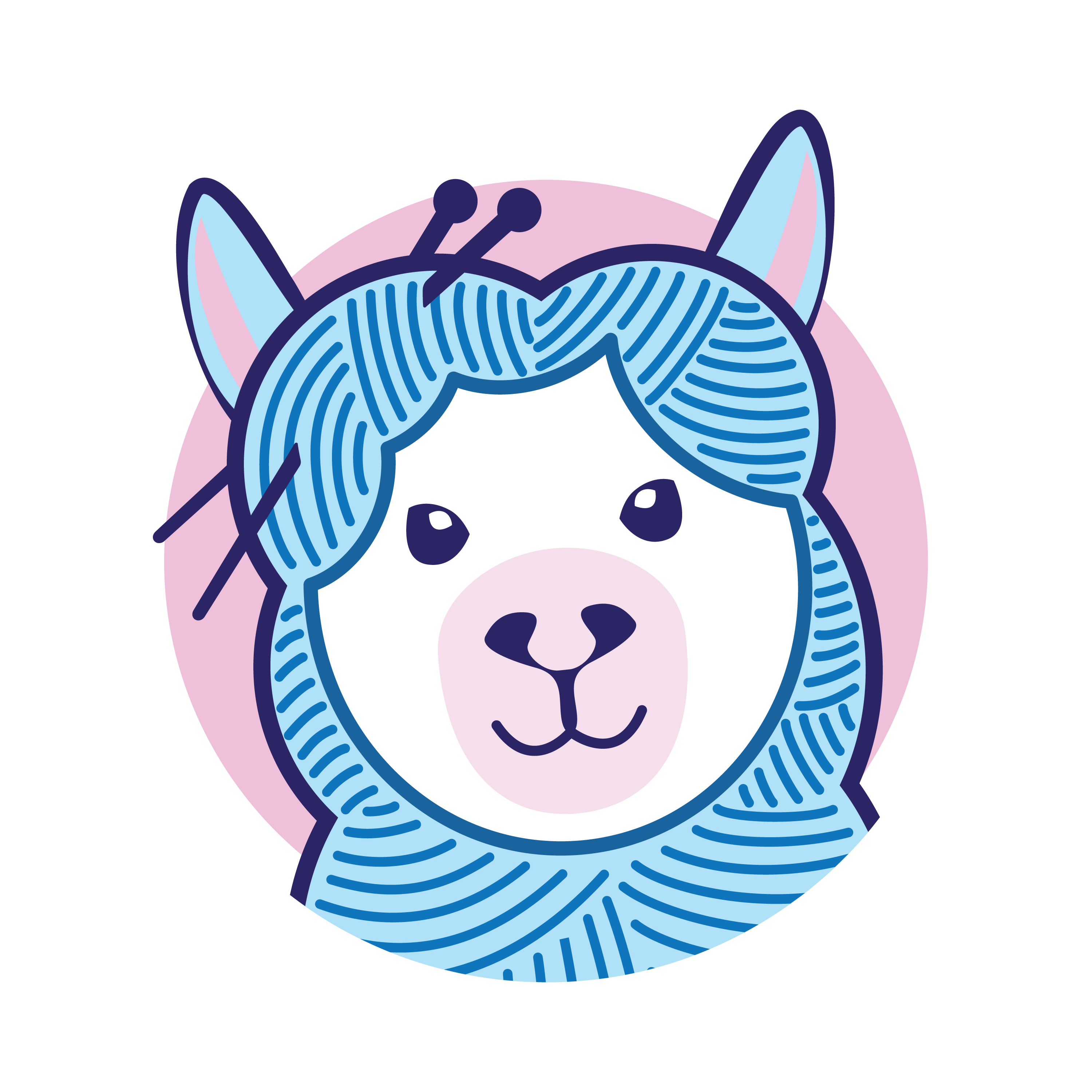- Home
- Types of Knit Stitches
- Knit and Purl Stitches
- Pinwheel Stitch
How to Knit the Pinwheel Stitch – Step-by-Step Knitting
Tutorial
The Pinwheel Stitch is a mesmerizing textured knitting pattern that uses alternating knit and purl sections to create a rotating visual effect—much like the blades of a pinwheel in motion. This 22-row repeat features shifting ribbed columns that transition gradually from one edge to the other, making it ideal for statement pieces that require both structure and style.
Though it looks intricate, the Pinwheel Stitch uses only basic knits and purls, making it accessible for adventurous beginners ready to try longer stitch patterns. Its reversible quality and bold geometry make it a striking choice for scarves, afghans, and modern home decor.
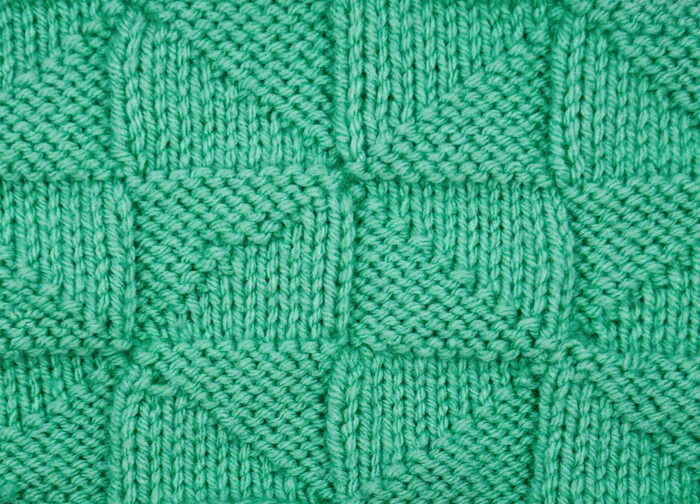 Pinwheel Knit Stitch Pattern
Pinwheel Knit Stitch PatternA Brief History of the Pinwheel Stitch
I've always been fascinated by the names used in knitting and crochet, so I'm always on the hunt for origins. At first glance, this stitch reminds me of my days when making quilts, but it was only a hunch. Feel free to skip this history, and move on to the directions.
Unlike classic cables or lace motifs with deep historical roots, the Pinwheel Stitch is a modern textured pattern that likely emerged in the late 20th century. It reflects the growing popularity of geometric and optical effects in knitting, where simple stitch combinations produce movement and dimension.
The stitch mimics the rotation of a child's pinwheel toy through its gradual knit-purl transitions. While not formally attributed to any one designer or era, it’s a popular inclusion in contemporary knitting dictionaries and swatch collections. Its rise in popularity is due to its striking visual impact, reversibility, and simplicity—perfect for knitters who enjoy meditative knitting with dramatic results.
Skill Level

Advanced beginner – Requires knowledge of how to knit and purl and the ability to follow a multi-row repeat, which may be daunting for absolute beginners.
Skills Needed
Abbreviations
K = Knit
P = Purl
** = Repeat from * (for the number of times indicated by the pattern
Notes About the Pinwheel Pattern
- Reversible: Yes. Both sides mirror the movement of the pinwheel, though not identical, they are equally attractive.
- Texture: The stitch creates a dense, springy fabric.
- Yarn Choice: Solid or semi-solid yarns are recommended to show off the design clearly.
- Blocking: Blocking helps even out the fabric and emphasizes the directional flow.
- Stitch Multiple of 20
- Row Count: 22 rows
Reversible Pattern
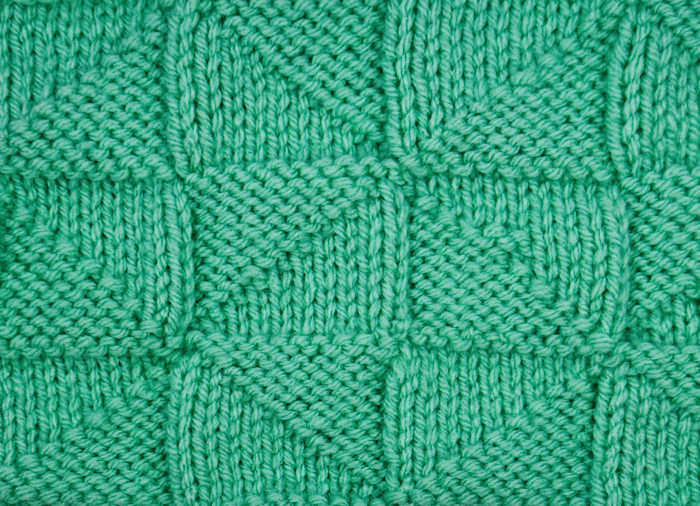 Wrong Side Showing of the Pinwheel Knit Stitch Pattern: This is a Reversible Pattern
Wrong Side Showing of the Pinwheel Knit Stitch Pattern: This is a Reversible PatternSupplies Needed for a Practice Swatch
- Yarn: Worsted-weight (CKC #4) or DK (CKC #3) work best on this swatch. I used Knit Picks Brava Worsted Weight Yarn
- Knitting Needles: Size needed for chosen yarn. For Worsted weight yarn, use size 7 or 8 (4.5 or 5.0 mm)
- Yarn needle for weaving in ends
- Scissors
- Stitch marker (optional)
Written Instructions
Cast On: A multiple of 20 stitches (20, 40, 60 etc.
Row 1: *K10, P10; rep from * to end.
Row 2: *P1, K9, P9, K1; rep from * to end.
Row 3: *P2, K8, P8, K2; rep from * to end.
Row 4: *P3, K7, P7, K3; rep from * to end.
Row 5: *P4, K6, P6, K4; rep from * to end.
Row 6: *P5, K5; rep from * to end.
Row 7: *P6, K4, P4, K6; rep from * to end.
Row 8: *P7, K3, P3, K7; rep from * to end.
Row 9: *P8, K2, P2, K8; rep from * to end.
Row 10: *P9, K1, P1, K9; rep from * to end.
Row 11: *P10, K10; rep from * to end.
Row 12: *K10, P10; rep from * to end.
Row 13: *K9, P1, K1, P9; rep from * to end.
Row 14: *K8, P2, K2, P8; rep from * to end.
Row 15: *K7, P3, K3, P7; rep from * to end.
Row 16: *K6, P4, K4, P6; rep from * to end.
Row 17: *K5, P5; rep from * to end.
Row 18: *K4, P6, K6, P4; rep from * to end.
Row 19: *K3, P7, K7, P3; rep from * to end.
Row 20: *K2, P8, K8, P2; rep from * to end.
Row 21: *K1, P9, K9, P1; rep from * to end.
Row 22: *P10, K10; rep from * to end.
Repeat Rows 1–22 for pattern.
Instructions in Chart Form
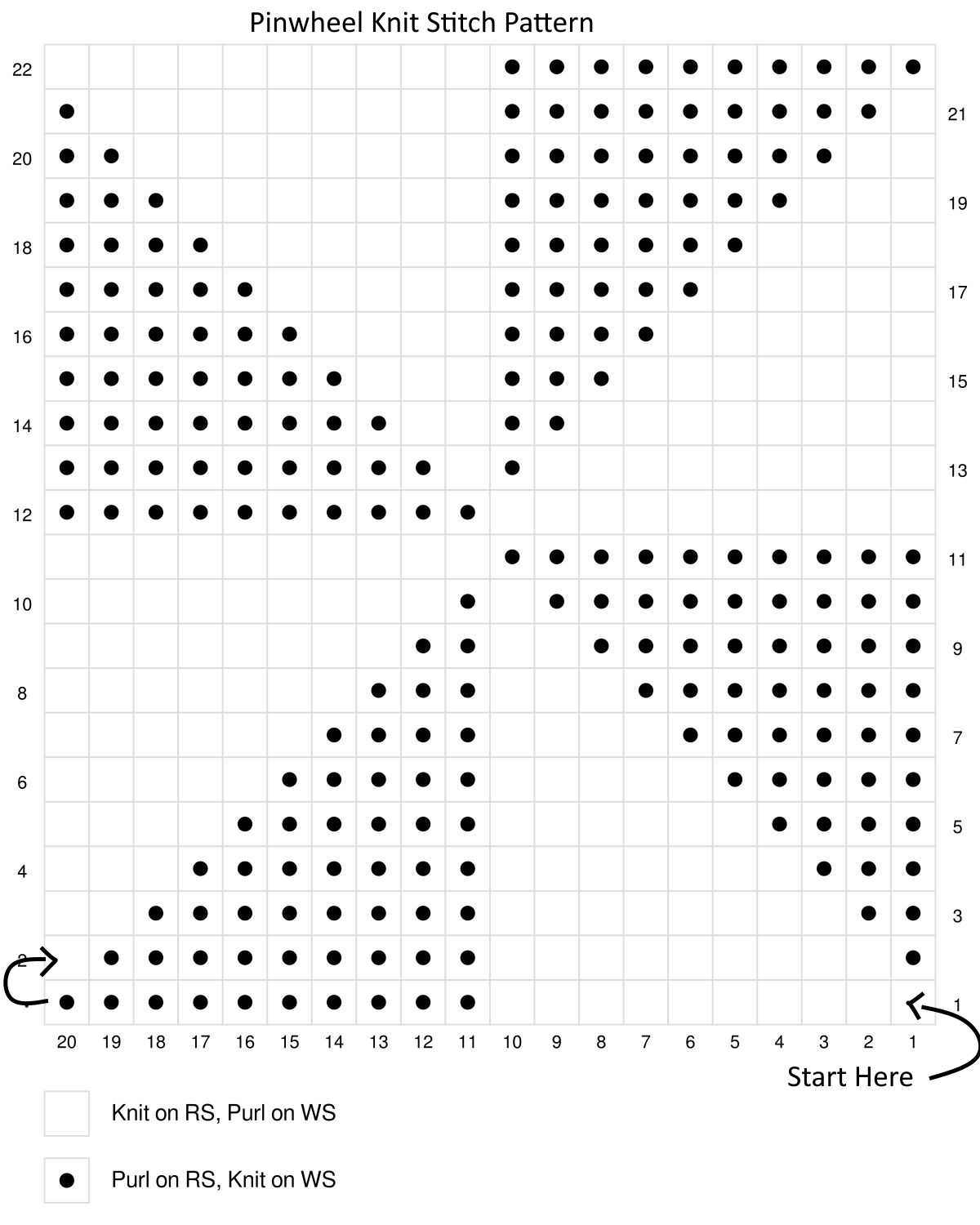
Learn more about how to master knit charts.
What Projects Can I Use the Knit Pinwheel Stitch Pattern For?
The Pinwheel Stitch is ideal for:
- Scarves (its reversible nature makes both sides attractive)
- Baby blankets and afghans
- Cushion and pillow covers
- Table runners or placemats
- Modern knitwear designs where geometric texture is needed
Frequently Asked Questions
Is the Pinwheel Stitch reversible?
Is the Pinwheel Stitch reversible?
Yes, the stitch pattern is reversible. While each side has a slightly different texture, both sides showcase the pinwheel-like transitions.
What kind of yarn works best?
What kind of yarn works best?
Worsted or DK weight yarns in solid or tonal colors work best. Highly variegated yarns may obscure the texture.
Is this pattern good for beginners?
Is this pattern good for beginners?
This pattern only requires that one know how to make the knit and purl stitch. Confident beginners who are comfortable with knit and purl combinations over multiple rows will enjoy this pattern. The biggest hurdle is knitting a 22-row repeat.
Pin Now, Knit Later
Last Words
While the pinwheel pattern requires the knowledge of knits and purls only, the biggest hurdle for beginners is following the 22-row repeat. It requires that many rows to complete the entire shape of a pinwheel. Those that love geometric patterns may also like these other knit and purl stitch patterns available on Smart Knit Crochet:
